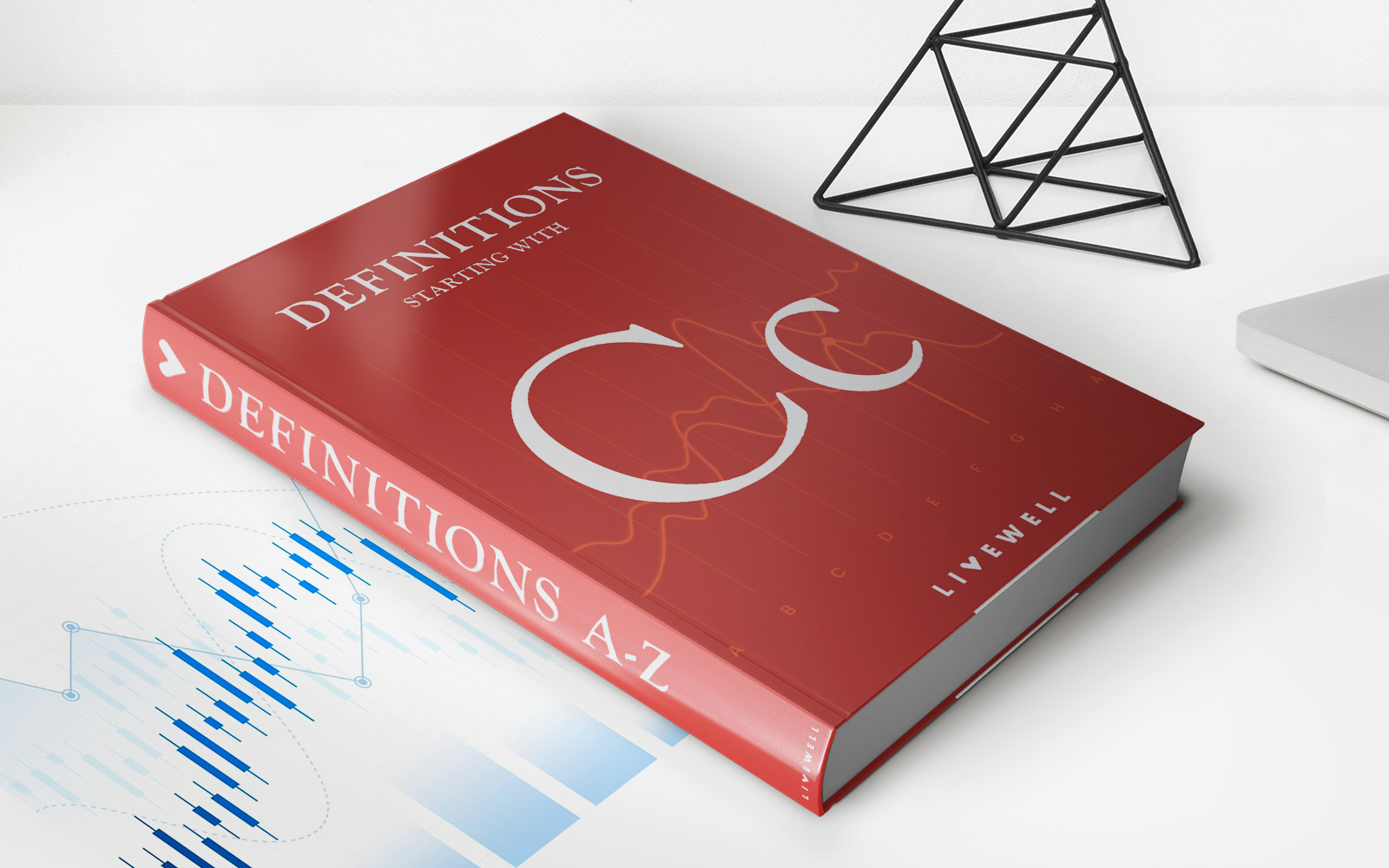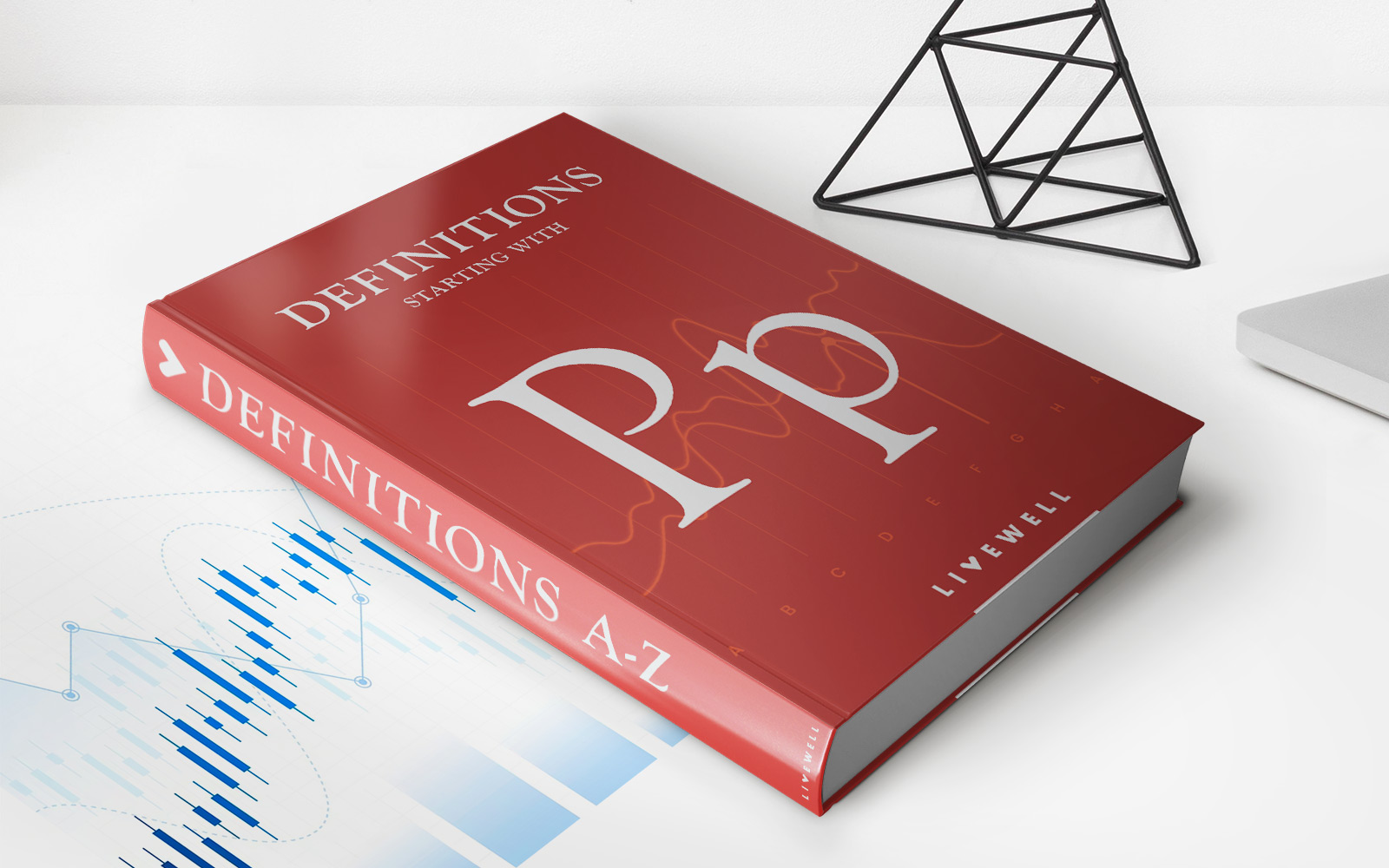

Finance
How Long Can An Insurance Claim Stay Open
Published: November 22, 2023
Find out how long an insurance claim can stay open in the finance industry. Understand the process and timeline for closing a claim.
(Many of the links in this article redirect to a specific reviewed product. Your purchase of these products through affiliate links helps to generate commission for LiveWell, at no extra cost. Learn more)
Table of Contents
- Introduction
- What is an insurance claim?
- Factors that determine how long an insurance claim can stay open
- Statute of limitations for insurance claims
- Typical timeframes for different types of insurance claims
- How to keep an insurance claim open for longer
- Reasons why an insurance claim may remain open indefinitely
- Case study: Examples of long-open insurance claims
- Conclusion
Introduction
Dealing with an insurance claim can be a complex and time-consuming process. Whether you’re filing a claim for a car accident, property damage, or a medical expense, it’s important to understand how long an insurance claim can stay open. This knowledge can help you plan and navigate the claim process more effectively.
An insurance claim refers to a formal request made by a policyholder to an insurance company for compensation or coverage for a specific loss or damage. It is the mechanism through which individuals or businesses seek financial assistance to recover from unexpected events or accidents covered by their insurance policies.
Insurance claims can arise from various situations, such as a car collision, natural disasters, personal injury, or even a house break-in. The length of time an insurance claim stays open depends on a variety of factors, including the type of claim, the documentation required, and the laws and regulations that govern insurance practices.
Understanding the timeframe of an insurance claim is crucial for both the policyholder and the insurance company. For policyholders, it helps them plan and manage their finances while waiting for reimbursement or compensation. For insurance companies, it allows them to efficiently process claims and allocate resources effectively.
One of the key factors that determine how long an insurance claim stays open is the statute of limitations. This is the specific period of time within which a claim can be filed after the occurrence of an incident. The statute of limitations varies depending on the type of insurance and the jurisdiction in which the claim is filed.
Although there are general guidelines for the typical timeframes of different types of insurance claims, it’s important to note that each claim is unique, and the duration can vary widely depending on the circumstances. Policyholders should be proactive in providing all necessary documentation and promptly responding to any requests from the insurance company to avoid unnecessary delays in the claim process.
In the subsequent sections, we will explore in more detail the factors that determine the length of time an insurance claim can stay open, the typical timeframes for various types of claims, and steps policyholders can take to keep a claim open for longer.
What is an insurance claim?
An insurance claim is a formal request made by a policyholder to an insurance company to seek financial coverage or compensation for a specific loss or damage. When individuals or businesses experience an unfortunate event or accident that is covered by their insurance policy, they can file a claim to receive financial assistance to recover from the incident.
Insurance claims can arise from a wide range of situations. For example, in auto insurance, a policyholder may file a claim after a car accident to cover the cost of repairs or medical expenses. In homeowners insurance, a claim can be made for property damage caused by events like storms, fires, or burglaries. Similarly, in health insurance, policyholders can file claims for medical treatments, surgeries, or prescriptions.
The insurance claim process typically involves several steps. First, the policyholder must notify the insurance company of the incident and provide all relevant details, such as the date, time, and location of the event. The insurance company may then assign an adjuster to investigate the claim and assess the extent of the damage or loss.
Once the claim has been evaluated, the insurance company will determine the coverage amount and the policyholder’s eligibility for compensation. If the claim is approved, the policyholder will receive the agreed-upon reimbursement or payment. If the claim is denied, the policyholder may have the option to appeal the decision or seek alternative dispute resolution methods.
Insurance claims play a vital role in protecting policyholders from financial hardships caused by unexpected events or accidents. They provide individuals and businesses with the peace of mind that if a covered loss occurs, they can seek compensation to help them recover and rebuild.
It’s important to note that policies may have deductibles, which are the amount a policyholder must pay out of pocket before the insurance company starts covering the costs. Additionally, insurance claims may affect future premiums, as filing frequent claims can indicate a higher risk and lead to higher premiums or policy adjustments.
Understanding the process and purpose of insurance claims can help policyholders navigate the system more effectively and ensure they receive the appropriate coverage and compensation in times of need. It’s essential to carefully review the terms and conditions of an insurance policy to understand the specific requirements and procedures for filing a claim.
Factors that determine how long an insurance claim can stay open
The length of time an insurance claim can stay open depends on several factors that play a significant role in the claim process. Understanding these factors can help policyholders have realistic expectations and navigate the timeline more effectively. Here are some key factors that can influence the duration of an insurance claim:
- Type of claim: The type of insurance claim being filed can greatly impact the timeframe for resolution. Some claims, such as minor property damage or simple medical expenses, can be processed relatively quickly, while complex claims, such as those involving extensive property damage, injuries, or legal disputes, may take longer to resolve.
- Severity of the claim: The severity of the loss or damage can also impact the duration of the claim. Insurance companies often prioritize claims based on the severity of the situation. Claims involving life-threatening injuries or substantial property damage may receive expedited processing, while less severe claims may take longer.
- Documentation requirements: The completeness and accuracy of the documentation provided by the policyholder can significantly affect the processing time of a claim. Insurance companies require specific documentation, such as incident reports, medical records, invoices, and proof of ownership, to assess the validity of the claim. Failure to provide the necessary documentation or delays in submission can prolong the claim process.
- Insurance company processes: Each insurance company has its own internal processes and procedures for handling claims. These processes can differ in efficiency and the amount of time required for investigation and evaluation. Some companies may have streamlined processes and advanced technology that expedite claim processing, while others may have more manual and time-consuming protocols.
- Communication between parties: Effective communication between the policyholder, insurance company, adjusters, and any other relevant parties can play a crucial role in the duration of the claim. Timely and clear communication helps resolve any questions or discrepancies, allowing the claim to move forward smoothly. Delays in communication or a lack of cooperation from any party involved can cause significant delays in the claim process.
- Statute of limitations: Each jurisdiction has specific statutes of limitations, which are the legal time limits within which a claim must be filed. Failure to file within the designated timeframe can result in the claim being denied. It’s essential for policyholders to be aware of the statute of limitations for their specific type of claim and jurisdiction to ensure compliance.
It’s important to remember that the duration of an insurance claim can vary widely depending on these factors and the unique circumstances of each case. Policyholders should stay in regular contact with their insurance company and promptly provide any requested information to help expedite the claim process.
Statute of limitations for insurance claims
The statute of limitations refers to the legal time limit within which an insurance claim must be filed. It varies depending on the jurisdiction and the type of claim being made. Understanding the statute of limitations is crucial as failure to file a claim within the specified timeframe can result in the claim being barred and the policyholder being unable to seek compensation.
Statutes of limitations serve several purposes in the insurance industry. They help promote timely resolution of claims, protect the rights of all parties involved, and ensure that evidence and witnesses are still available to support the claim. Additionally, they provide a level of certainty and finality to the claim process.
The length of the statute of limitations can vary significantly depending on the type of insurance claim. For example:
- Auto insurance claims: The statute of limitations for car accident claims can range from one to six years in different jurisdictions. It’s important to check the specific timeframe in your jurisdiction to avoid missing the deadline.
- Property insurance claims: Claims related to property damage, such as those arising from fire, storms, or theft, may have statute of limitations ranging from one to ten years, depending on the jurisdiction and the policies in place.
- Medical insurance claims: The statute of limitations for medical insurance claims can vary based on the state and the specific circumstances. It is typically shorter, ranging from one to three years, to encourage prompt resolution of healthcare-related disputes.
- Product liability claims: Claims related to faulty or defective products often have statutes of limitations ranging from two to six years, depending on the jurisdiction and the type of product involved.
It’s crucial for policyholders to be aware of the statute of limitations applicable to their specific type of claim and jurisdiction. Failing to file a claim within the designated timeframe can result in the claim being denied and the policyholder losing their right to seek compensation. It’s recommended to review the insurance policy and consult with legal professionals if there is any uncertainty regarding the statute of limitations.
It’s important to note that the statute of limitations can vary not only by the type of claim but also by the circumstances surrounding the claim. Certain factors, such as the discovery of harm, the age of the claimant, or the presence of fraud, may impact the timeframe within which a claim can be filed.
Policyholders should take prompt action if they wish to file a claim, ensuring they gather all the necessary documentation and follow the procedures outlined by their insurance company. Procrastination or delays can risk exceeding the statute of limitations, jeopardizing their ability to obtain compensation for their losses.
Ultimately, being aware of the statute of limitations and taking timely action can protect the rights and interests of policyholders, ensuring they have the opportunity to seek the financial recovery they are entitled to under their insurance policies.
Typical timeframes for different types of insurance claims
The duration of an insurance claim can vary depending on the type of claim and the specific circumstances surrounding it. While each claim is unique and subject to various factors, it is helpful to have a general understanding of the typical timeframes for different types of insurance claims. Here are some examples:
- Auto insurance claims: Minor car accident claims that involve only property damage can often be resolved within a few weeks. However, more complex claims that involve injuries, liability disputes, or legal proceedings may take several months to a year to reach a resolution.
- Property insurance claims: The processing time for property insurance claims depends on the extent of the damage and the complexity of the claim. For smaller claims, such as minor repairs, the timeframe can range from a few weeks to a couple of months. In cases of significant damage or total loss, it may take several months or even a year to settle the claim, especially if there are disputes over coverage or valuation.
- Medical insurance claims: The timeframe for medical insurance claims can vary depending on the complexity of the treatment and the documentation required. Simple claims for routine medical services may be processed within a few weeks. However, claims involving extensive medical procedures, hospital stays, or specialized treatments may take several months to finalize.
- Life insurance claims: Life insurance claims typically have a more straightforward timeline compared to other types of claims. Once the necessary documentation, such as the death certificate, is provided, the claim can be processed within a few weeks, allowing beneficiaries to receive the policy proceeds.
- Liability insurance claims: Liability insurance claims can involve various scenarios, such as personal injury or property damage caused by a policyholder. The timeline for liability claims can vary widely based on the complexity of the case, the investigation required, and potential negotiations with the affected parties. Some relatively simple liability claims can be resolved within a few months, while complex cases may take years to reach a settlement.
It’s important to note that these timeframes are merely estimates and can be influenced by several factors, such as the cooperation of all parties involved, the need for additional documentation, and potential legal processes. It’s essential for policyholders to stay in regular communication with their insurance company, respond promptly to any requests for information, and follow up on the progress of their claim.
While waiting for a claim to be processed, policyholders may face financial challenges. It is advisable to keep track of all related expenses and maintain open communication with the insurance company to mitigate any financial hardships. Understanding the typical timeframes for different types of claims can help policyholders plan and manage their expectations while navigating the claim process.
How to keep an insurance claim open for longer
While most policyholders aim for a timely resolution of their insurance claims, there may be certain situations where keeping a claim open for a longer period is necessary or beneficial. Whether it’s due to ongoing medical treatments, additional property damage, or unresolved liability issues, here are some strategies to consider if you need to keep an insurance claim open for a longer duration:
- Provide ongoing documentation: Continue to gather and provide updated documentation related to the claim. This may include medical records, repair estimates, or any other relevant evidence that supports your case. Keeping a comprehensive record ensures that the insurance company has the necessary information to evaluate your claim thoroughly.
- Maintain open communication: Stay in regular contact with your insurance company and the assigned claims adjuster. Update them on any developments or changes in your situation as they arise. This helps keep the lines of communication open and ensures that everyone involved is aware of the ongoing nature of your claim.
- Engage experts if needed: In complex cases, involving experts such as medical professionals, attorneys, or independent assessors can provide additional support and help strengthen your claim. These experts can provide ongoing evaluations and reports that contribute to the validity of your claim.
- Keep records of ongoing expenses: If you continue to incur expenses related to the claim, such as medical bills or repair costs, keep detailed records of these expenses. This includes keeping receipts, invoices, and any other relevant documentation. These records can aid in the negotiations and ensure that all expenses are considered when reaching a settlement.
- Be proactive and responsive: Promptly respond to any requests for information or documentation from the insurance company. Be proactive in providing updates and any additional evidence they may require. This demonstrates your commitment to resolving the claim and can help maintain the claim’s open status.
- Consider legal representation if necessary: If your claim involves complex legal issues or requires negotiation with multiple parties, hiring an attorney who specializes in insurance claims can be beneficial. They can advocate on your behalf and help ensure that your claim remains open until a satisfactory resolution is reached.
- Review and understand your policy: Familiarize yourself with the terms and conditions of your insurance policy to know your rights and obligations. Understanding the coverage and limitations can help you navigate the claim process more effectively and make informed decisions regarding the openness of your claim.
It’s important to note that while these strategies can help prolong the life of an insurance claim, the ultimate resolution will depend on the specific circumstances and the policies of the insurance company. It’s advisable to consult with a legal professional or insurance expert for guidance on how to best proceed with your particular claim.
Remember, the goal of keeping a claim open for a longer duration is to ensure that your rights and entitlements are protected. By following these strategies, you can maintain a proactive approach and increase the chances of a fair and satisfactory resolution for your insurance claim.
Reasons why an insurance claim may remain open indefinitely
While most insurance claims aim for a timely resolution, there are instances where a claim may remain open indefinitely. Various factors can contribute to the extended duration of a claim, and understanding the reasons behind this can help policyholders navigate the process more effectively. Here are some reasons why an insurance claim may remain open indefinitely:
- Disputed liability: When there is a disagreement regarding who is at fault for an incident, particularly in liability claims, the claim may remain open until the parties can reach a resolution. This can involve ongoing negotiations, legal proceedings, or even the need for a court decision.
- Complex investigation: In some cases, insurance claims require a comprehensive and thorough investigation to determine the validity and extent of the damages. This can involve gathering evidence, analyzing medical reports, or consulting experts. The complexity of the investigation process can significantly prolong the claim’s resolution.
- Legal proceedings: If an insurance claim involves a legal dispute, such as a lawsuit against a liable party or a coverage dispute with the insurance company, the claim can remain open until the legal process is concluded. This can include court hearings, motions, settlements, or even appeals.
- Ongoing medical treatments: In cases where a claim involves ongoing medical treatments, the claim may remain open until the treatment plan is completed or the full extent of the medical expenses and damages can be assessed. This is particularly common in long-term disability or chronic illness claims.
- Missing documentation or information: If the insurance company requires additional documentation or information to evaluate the claim, and it is not promptly provided, the claim may remain open indefinitely. Policyholders should proactively communicate with the insurance company and promptly respond to any requests for information to prevent unnecessary delays.
- Policyholder action or inaction: In some cases, the action or inaction of the policyholder can contribute to a claim remaining open indefinitely. This can include delays in reporting the incident, failure to provide required documentation, or not actively participating in the claim process. Taking proactive steps and cooperating with the insurance company can help expedite claim resolution.
- Absence of a settlement agreement: If the parties involved in the claim cannot reach a mutual agreement on the settlement amount or terms, the claim may remain open until a satisfactory resolution can be negotiated. This can involve ongoing discussions, mediation, or alternative dispute resolution methods.
It’s important to note that while claims remaining open indefinitely are relatively rare, they can occur in complex cases or situations where certain factors prolong the resolution process. Policyholders should maintain open communication with their insurance company, follow up on the progress of their claim, and consider seeking legal advice if necessary.
Ultimately, the goal should be to work towards a fair and satisfactory resolution, and understanding the reasons why a claim may remain open indefinitely can help policyholders manage their expectations and navigate the claim process effectively.
Case study: Examples of long-open insurance claims
Examining real-life examples can provide insights into why insurance claims can remain open for an extended period. The following case studies illustrate situations where claims have remained unresolved for a significant duration:
Case Study 1: Property Damage Claim
In this case, a policyholder experienced severe damage to their property due to a natural disaster, such as a hurricane or earthquake. The insurance claim was initially reported, and an adjuster was assigned to assess the damages. However, due to the widespread devastation in the area, the volume of claims overwhelmed the insurance company’s resources.
As a result, the claim process was delayed as the insurance company struggled to allocate sufficient adjusters and resources to evaluate and process each claim effectively. Additionally, disputes arose between the policyholder and the insurance company regarding the extent of the damages and the appropriate repair costs. Negotiations between the parties, coupled with legal proceedings, further prolonged the resolution of the claim.
Case Study 2: Personal Injury Claim
In this scenario, a policyholder was involved in a car accident resulting in severe injuries. The policyholder filed a personal injury claim with their auto insurance company to cover medical expenses and loss of income. However, determining the full extent and impact of the injuries proved challenging, requiring ongoing medical treatments, consultations with specialists, and assessments by independent medical experts.
The insurance company assigned a claims adjuster to investigate the claim and assess the medical reports. However, due to the complexity of the injuries and the need for ongoing treatment, the claim remained open for a prolonged duration. The insurance company required continuous documentation to evaluate the claim as the policyholder underwent various medical procedures and sought multiple medical opinions.
Case Study 3: Liability Claim
In this case, a policyholder was sued for personal injury by a third party who alleged that the policyholder’s negligence caused the accident. The insurance company initiated an investigation into the incident to determine liability and assess the damages claimed by the injured party.
The claim involved multiple parties, including the policyholder, the injured party, and potentially other witnesses. Gathering evidence, conducting interviews, and analyzing the legal implications took an extended period. The claim remained open as negotiations between the parties and their respective legal counsel continued, striving to reach a fair settlement agreement.
These case studies demonstrate that various factors, such as the complexity of the claim, disputes, legal proceedings, or resource limitations, can contribute to insurance claims remaining open for a longer duration. Policyholders facing similar circumstances should maintain regular communication with their insurance company and, if necessary, seek legal advice to navigate the claim process effectively.
Conclusion
Navigating the process of an insurance claim can be a complex and time-consuming endeavor. Understanding how long an insurance claim can stay open is crucial for policyholders seeking compensation or coverage for losses or damages. While each claim is unique and subject to various factors, there are common elements that impact the duration of the claim process.
Factors such as the type of claim, severity of the loss, documentation requirements, insurance company processes, and communication between parties can influence the timeline of an insurance claim. Additionally, the statute of limitations sets a legal time limit for filing a claim, varying based on the type of claim and jurisdiction.
Typical timeframes for different types of insurance claims can provide a general expectation, but the length of the claim process is subject to unique circumstances. Policyholders should proactively provide all necessary documentation, maintain open communication with their insurance company, and promptly respond to any requests to expedite the claim process.
In certain situations, policyholders may need to keep a claim open for a longer duration. Strategies such as ongoing documentation, maintaining communication, engaging experts, and being proactive can help in these cases. However, it’s important to note that the claim’s ultimate resolution depends on various factors, including legal proceedings, ongoing treatments, or unresolved disputes.
While most insurance claims aim for a timely resolution, there are instances where claims may remain open indefinitely. Factors such as disputed liability, complex investigations, ongoing medical treatments, or missing documentation can contribute to an indefinite claim duration. In such cases, policyholders should maintain communication, cooperate with the insurance company, and consider seeking legal representation if needed.
Real-life case studies highlight the complexity and varied timelines of insurance claims. Whether it’s property damage, personal injury, or liability claims, unforeseen circumstances and legal proceedings can prolong the resolution process.
In conclusion, understanding the factors that influence claim duration, typical timeframes, and the reasons for prolonged claims can help policyholders navigate the process effectively. By having realistic expectations, staying proactive, and seeking guidance when needed, policyholders can increase their chances of a fair and satisfactory resolution for their insurance claims.














